Are you a photographer wondering Where To Sell Photos Online For Free and turn your passion into profit? At dfphoto.net, we understand the desire to share your visual artistry and earn money. This comprehensive guide will explore the best platforms and strategies to showcase and sell your photographs. Discover the secrets to mastering photographic techniques, building a stunning portfolio, and connecting with a thriving community of photography enthusiasts.
This guide is crafted to illuminate the path to success in the world of online photography, empowering you to elevate your skills and find the perfect outlets for your creative work. Learn about stock photography, fine art prints, and various creative ventures to monetize your photography and visual design talents.
Table of Contents
- Best Platforms To Sell Photos Online For Free
- Tips For Success In Stock Photography
- Building An Impressive Online Portfolio
- Selling Photos As Prints And Photo Books
- Offering Photography Services
- Pricing Strategies For Your Photos
- Understanding The Legal Aspects
- Frequently Asked Questions
1. Best Platforms To Sell Photos Online For Free
Where can you sell photos online for free? There are several platforms that can help you transform your passion into profit. Each platform offers unique features, commission structures, and target audiences, so finding the right fit is essential for your success. Let’s explore some of the top choices, which allow you to showcase your best pictures and start generating income.
1.1. Alamy
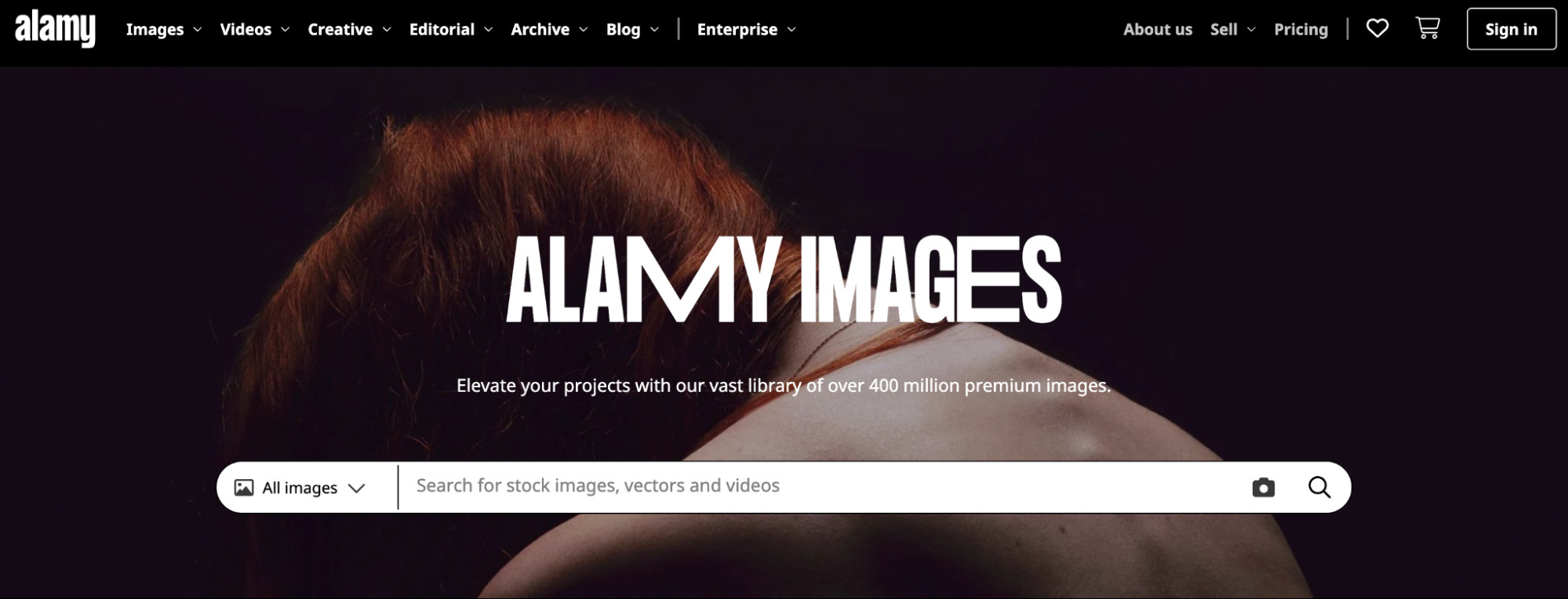 Alamy Images homepage showcasing a diverse range of royalty-free images, appealing to photographers seeking global visibility and high commission rates.
Alamy Images homepage showcasing a diverse range of royalty-free images, appealing to photographers seeking global visibility and high commission rates.
Alamy is a great platform to sell your own photos and earn a commission. Alamy stands out with its extensive collection of stock images, vectors, and videos. This platform allows you to contribute in multiple ways, offering an iOS app called Stockimo for selling photos directly from your phone.
How to Get Paid:
Alamy provides monthly payments with various commission models. Photographers can earn between 17% and 50% of sales, depending on the image’s popularity and license type. There are no long-term contracts, and payments can be made in multiple currencies.
1.2. 500px
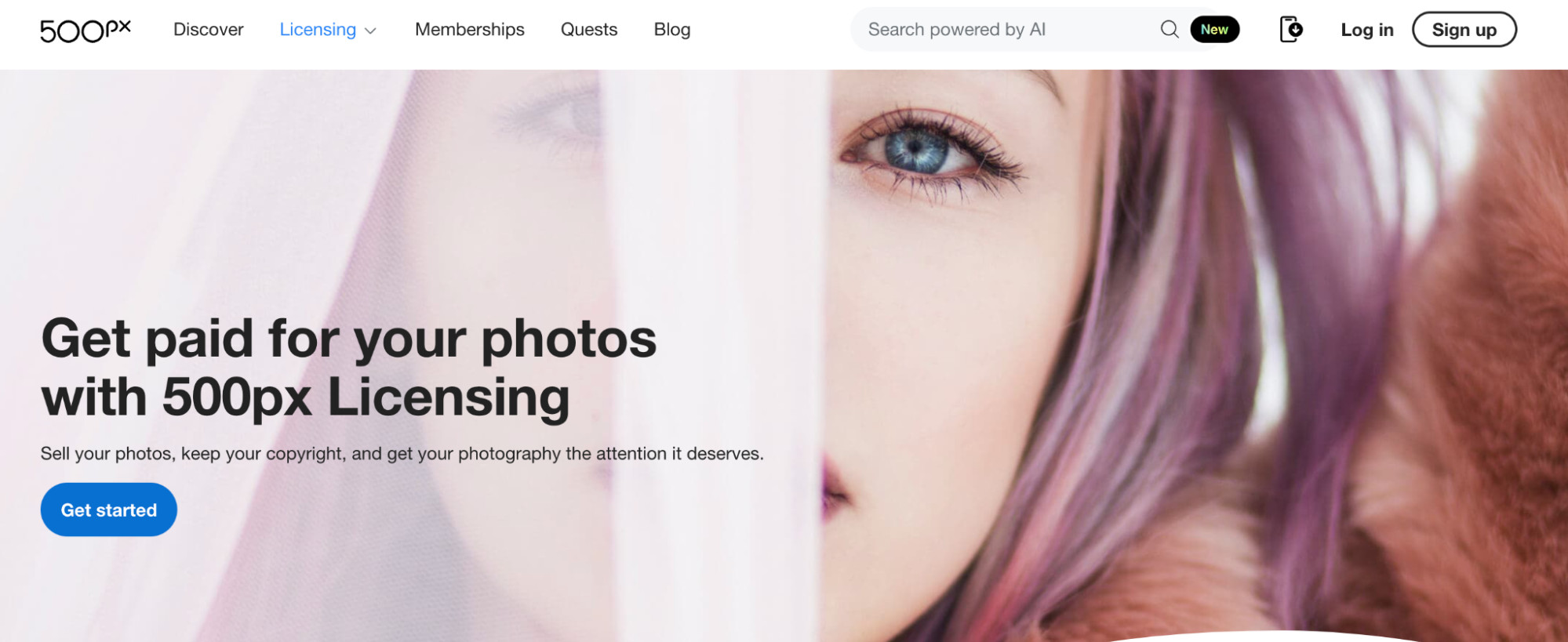 500px's homepage highlighting how contributors can monetize their photography skills through image licensing, blending community engagement with earning potential.
500px's homepage highlighting how contributors can monetize their photography skills through image licensing, blending community engagement with earning potential.
500px combines stock photo licensing with community features. 500px hosts a vibrant community of photographers who sell and license their photos online. Its Pulse algorithm helps new photographers gain recognition by highlighting their work to potential clients, provided their photos meet the platform’s quality standards.
How to Get Paid:
Paying members can earn up to 100% royalties for exclusive photos. This platform offers both income opportunities and a supportive community for photographers to grow and learn.
1.3. Shutterstock
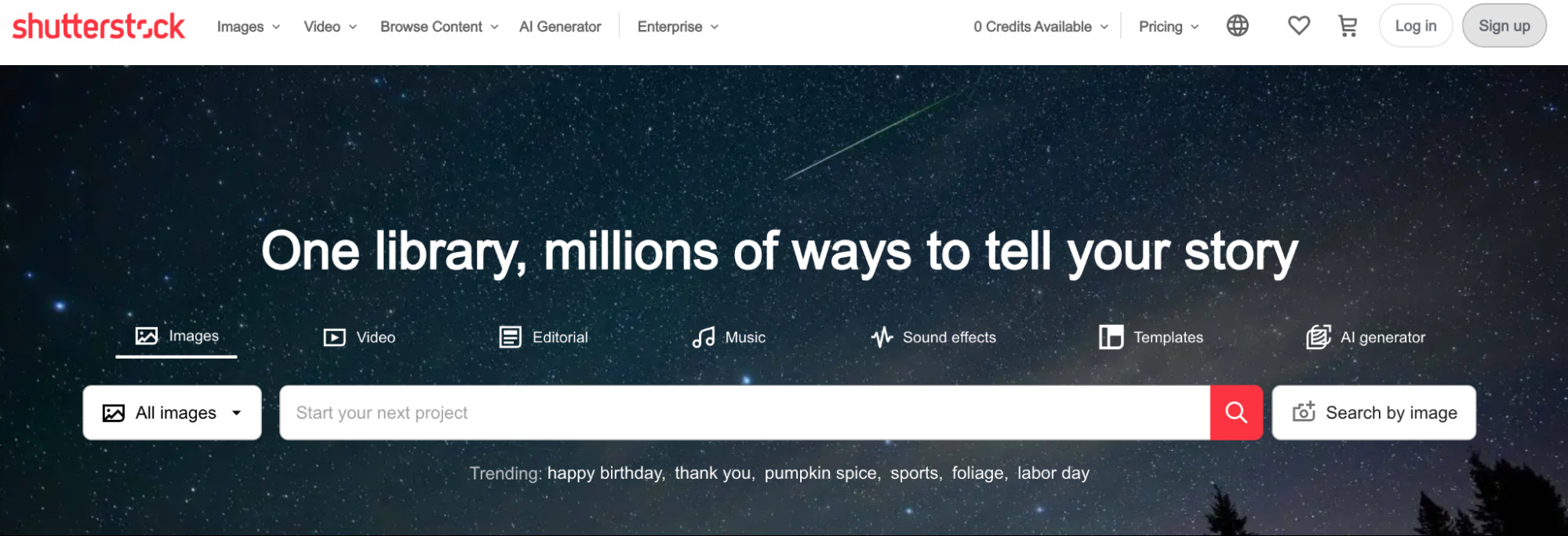 Shutterstock's landing page attracting users to explore a vast library of royalty-free images, videos, and music, ideal for photographers aiming to reach a broad audience.
Shutterstock's landing page attracting users to explore a vast library of royalty-free images, videos, and music, ideal for photographers aiming to reach a broad audience.
Shutterstock is one of the most popular photography websites. Shutterstock is a well-known stock photography website that has paid out over $1 billion to its community in the past 15 years. It’s considered a micro-stock site, where photos are cheaper and non-exclusive.
How to Get Paid:
Payouts range from 15% to 40%, based on earnings over time. Shutterstock also offers an affiliate program, allowing you to earn additional income by referring new photographers or customers.
1.4. Getty Images
 Getty Images' homepage inviting users to search for high-quality photos and images, targeting photographers with a focus on premium stock content.
Getty Images' homepage inviting users to search for high-quality photos and images, targeting photographers with a focus on premium stock content.
Getty Images has a large library of premium stock photos. Getty Images attracts brands and online publishers looking for high-quality or hard-to-find exclusive images. Together with its microstock site, iStock, the platform reaches more than 1.5 million customers worldwide.
How to Get Paid:
You can apply to become a contributor with a set of sample photos. Once accepted, you can earn between 15% and 45% of an image’s license fee.
1.5. iStock
 iStock's homepage promotes its AI-powered image creator, providing a modern platform for photographers to license their work and generate revenue.
iStock's homepage promotes its AI-powered image creator, providing a modern platform for photographers to license their work and generate revenue.
iStock is a non-exclusive contributor alternative to Getty Images. iStock is an offshoot of Getty Images, with the main difference being that photos on iStock can be non-exclusive.
How to Get Paid:
To sell your photos on iStock, you need to apply with a set of sample images. Commissions range from 15% to 45%, depending on contributor agreements.
1.6. Stocksy
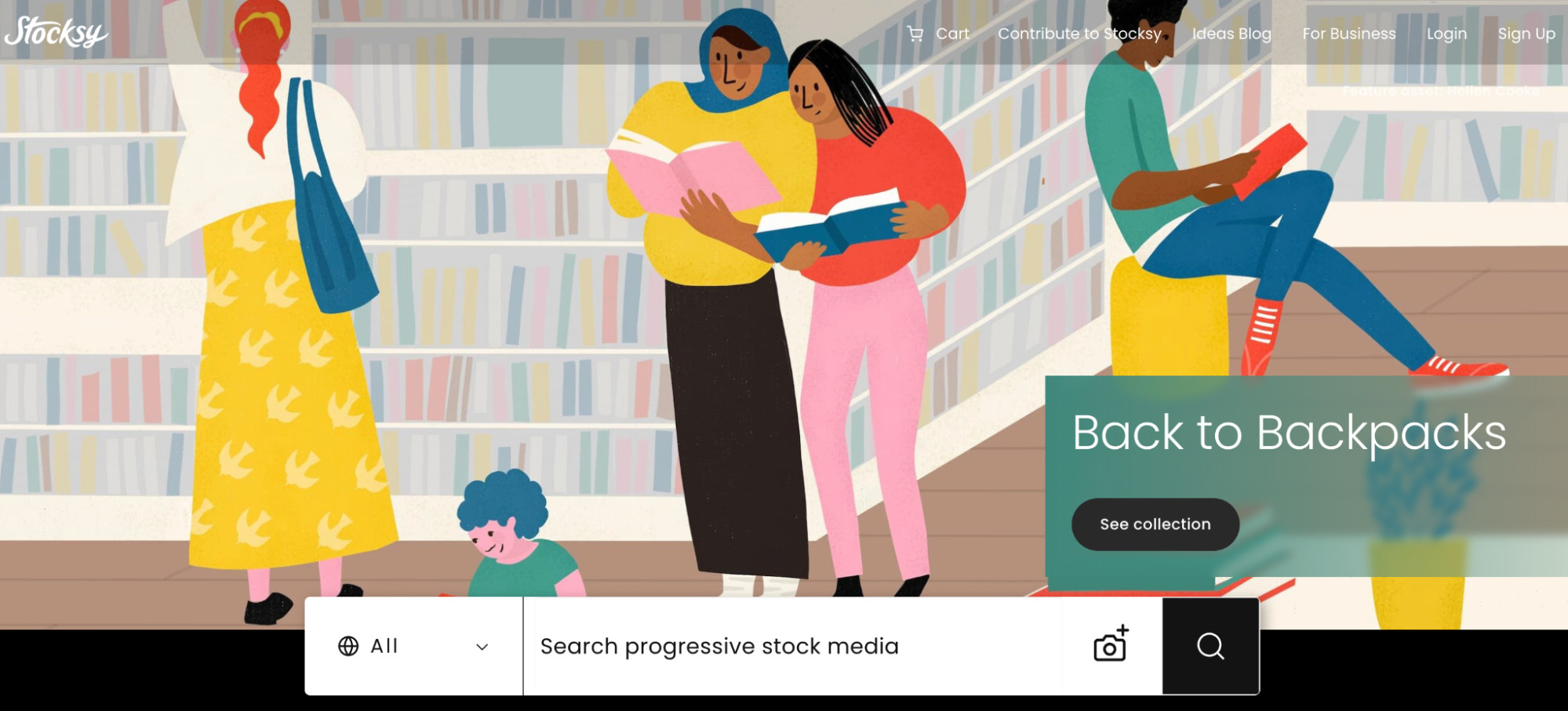 Stocksy's homepage showcasing an artistic graphic of people in a library, appealing to photographers interested in an artist-owned cooperative model for stock photography.
Stocksy's homepage showcasing an artistic graphic of people in a library, appealing to photographers interested in an artist-owned cooperative model for stock photography.
Stocksy is an accessible platform for newer photographers looking to sell online. Stocksy offers high payouts to contributors, with a 50% royalty on standard licenses and a 75% royalty on extended licenses. However, all photos must be exclusive to the platform.
How to Get Paid:
Stocksy contributors are paid monthly via PayPal, Payoneer, or check, with a minimum payout of $100. As an artist-owned cooperative, contributors can also receive profit-sharing when the co-op has a surplus.
1.7. Picfair
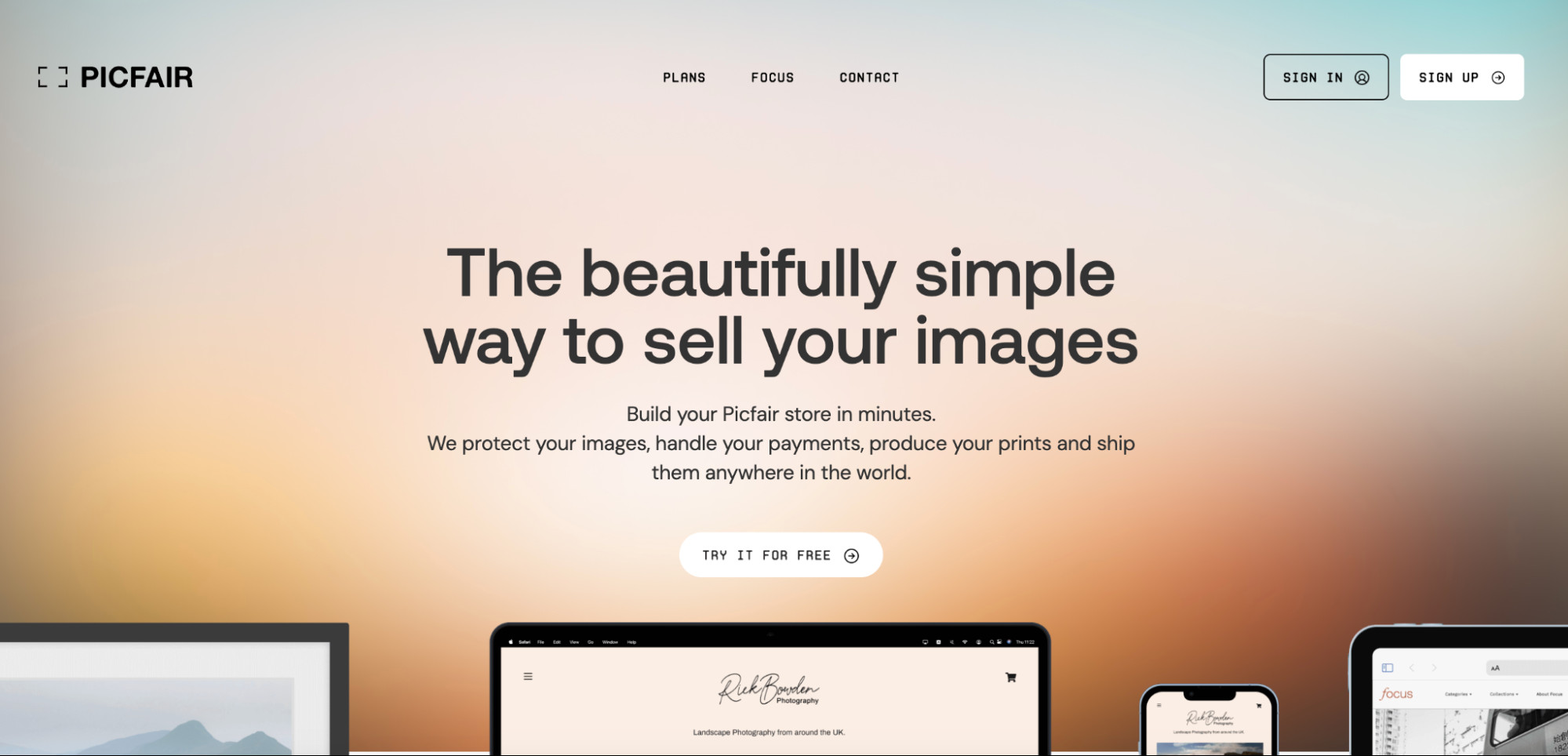 Picfair's landing page promoting a website builder designed specifically for photographers, enabling them to create a personalized e-commerce platform for their work.
Picfair's landing page promoting a website builder designed specifically for photographers, enabling them to create a personalized e-commerce platform for their work.
Create your own photography e-commerce website with Picfair. Picfair allows you to set your own prices for photos—both prints and digital downloads—and handles payment processing, print production, shipping, and licenses for digital images.
How to Get Paid:
Sign up for a Plus plan, priced at $4 per month when billed annually. This allows you to create a custom Picfair store with up to 10,000 images that can be sold as prints or downloads.
1.8. Adobe Stock
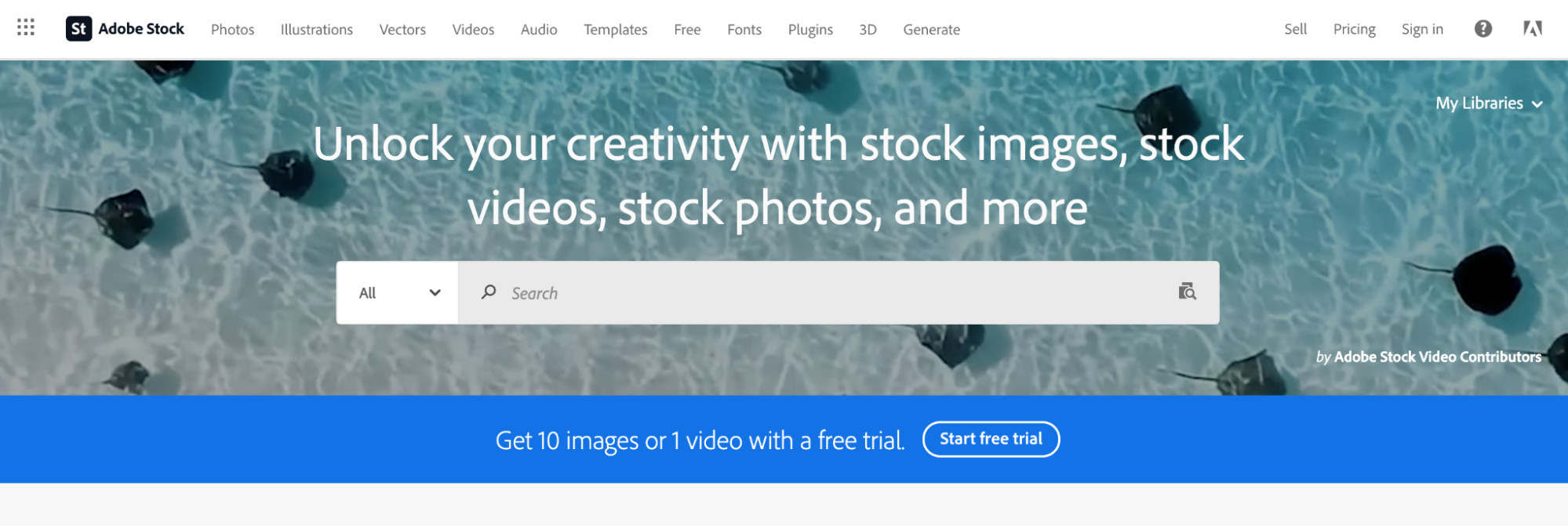 Adobe Stock's homepage featuring a vibrant underwater scene, appealing to photographers seeking seamless integration with Adobe software for selling their stock photos.
Adobe Stock's homepage featuring a vibrant underwater scene, appealing to photographers seeking seamless integration with Adobe software for selling their stock photos.
Adobe Stock integrates with the company’s popular photography software. Adobe Stock allows you to add your images, videos, vectors, and illustrations to the platform.
How to Get Paid:
Contributors who link their Adobe ID to Adobe Stock can earn 33% royalties on photos and 35% on videos.
1.9. Envato Elements
 Envato Elements' landing page highlights a diverse collection of stock photos, attracting photographers looking to share in subscriber revenue through a versatile platform.
Envato Elements' landing page highlights a diverse collection of stock photos, attracting photographers looking to share in subscriber revenue through a versatile platform.
Get a share of total subscriber revenue by joining Envato Elements. Envato Elements allows you to sell photos on its app or upload photos to your own site on the brand’s domain.
How to Get Paid:
Contributors earn between 25% and 50% of net subscription revenue.
1.10. Unsplash+
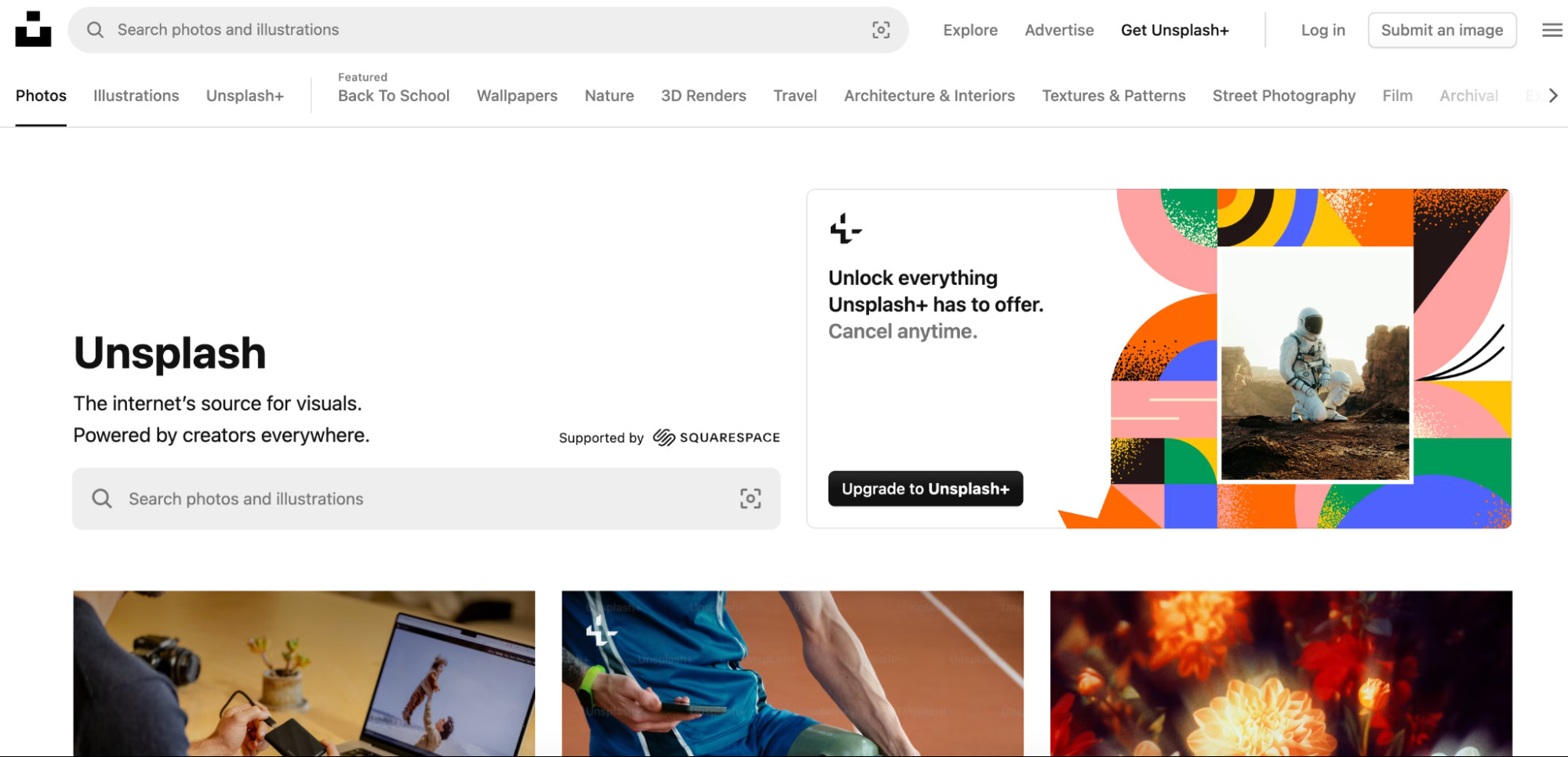 Unsplash's homepage showcases a call-to-action for photographers to contribute, offering a unique model where photographers are paid for completing specific image assignments.
Unsplash's homepage showcases a call-to-action for photographers to contribute, offering a unique model where photographers are paid for completing specific image assignments.
Unsplash pays photographers for submitting images for an assignment. Unsplash+ partners with contributors through its Unsplash+ program, where photographers respond to briefs and requests.
How to Get Paid:
Once accepted, you’ll see a list of briefs created by Unsplash customers. Rates for photos range, on average, between $5 and $30 per image.
1.11. Dreamstime
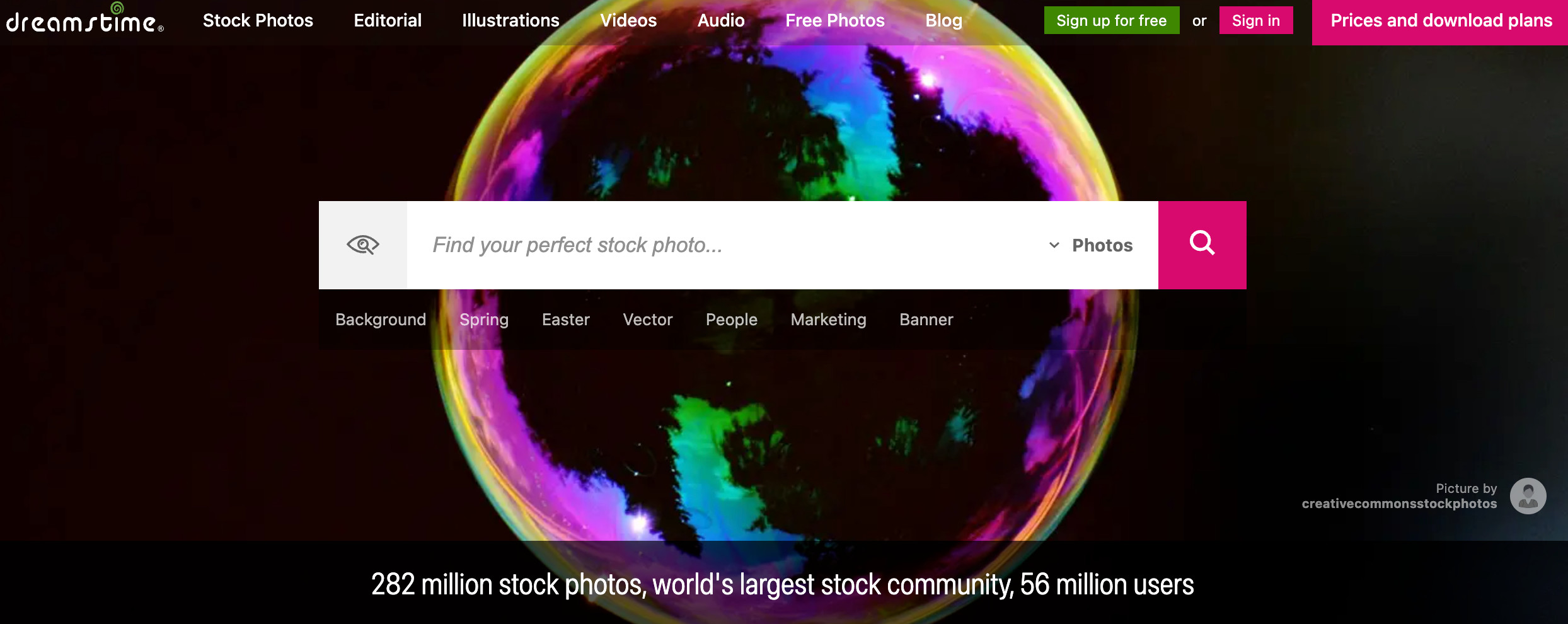 Dreamstime's homepage inviting users to sell their photos, emphasizing access to a vast library and a substantial user base for photographers aiming for broad exposure.
Dreamstime's homepage inviting users to sell their photos, emphasizing access to a vast library and a substantial user base for photographers aiming for broad exposure.
Dreamstime’s microstock library contains more than 250 million photos. Dreamstime provides access to a large, active audience with a library of over 250 million files and a user base of over 50 million.
How to Get Paid:
Dreamstime offers revenue sharing of 25% to 50% for non-exclusive content. Exclusive contributors earn an additional 10% and receive 20¢ for each approved submission. The platform also features an affiliate program that pays 10% of transaction values for each referred contributor or customer.
1.12. Snapped4U
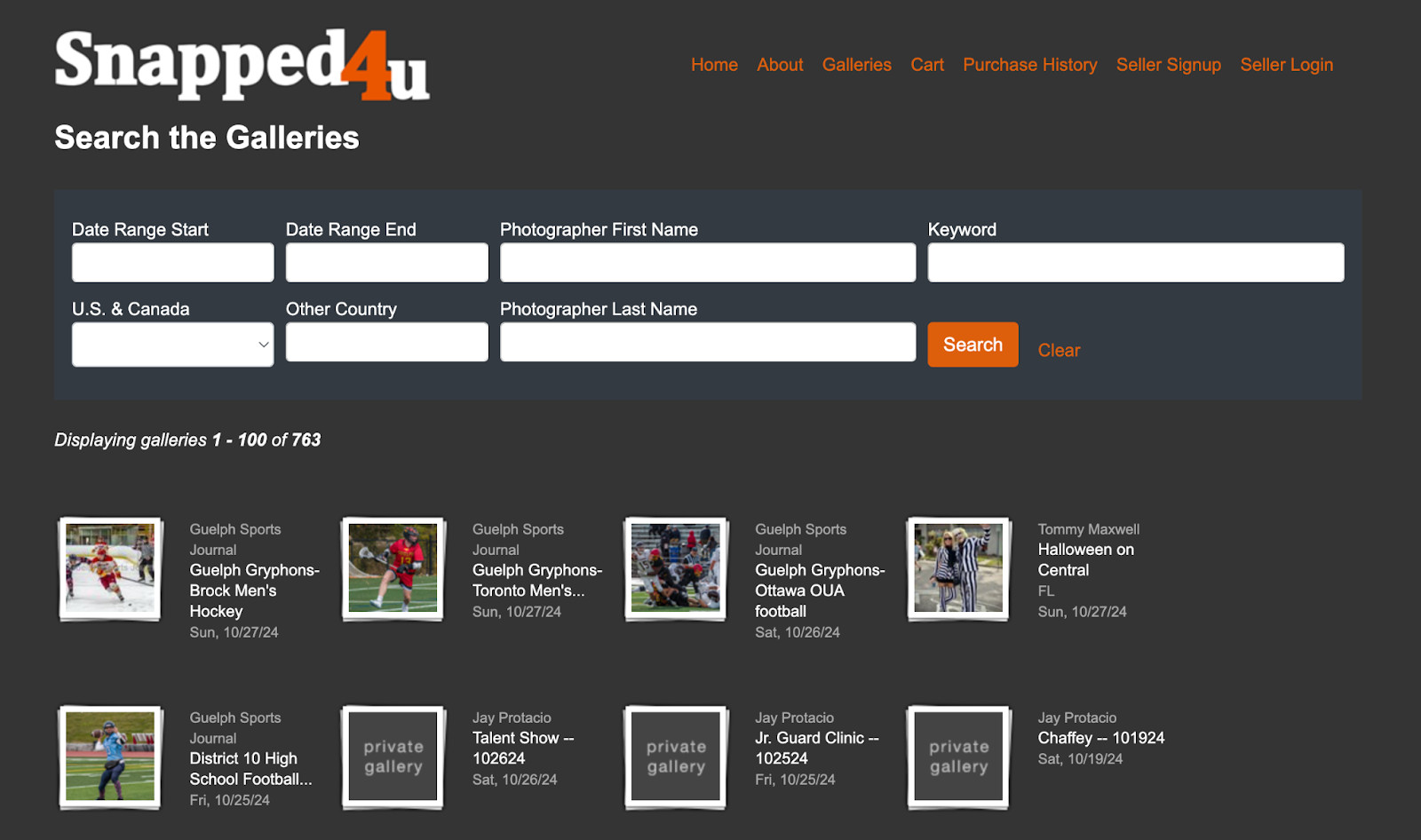 Snapped4U's homepage featuring a variety of photos from sports photographers, catering to photographers specializing in event and portrait photography with direct sales to clients.
Snapped4U's homepage featuring a variety of photos from sports photographers, catering to photographers specializing in event and portrait photography with direct sales to clients.
Snapped4U is a photo marketplace for event and portrait photographers. Snapped4U lets photographers create personalized galleries, set their own prices (up to $20 per image), and sell digital files directly to clients.
How to Get Paid:
Snapped4U charges a one-time $10 registration fee and retains a 10% to 12% commission on sales. Photographers are paid the balance in their account via PayPal on the first and 15th of each month.
1.13. Foap
 Foap's creator landing page advertises its mobile app, attracting photographers to sell their commercial-quality images directly to brands via missions and the Foap market.
Foap's creator landing page advertises its mobile app, attracting photographers to sell their commercial-quality images directly to brands via missions and the Foap market.
Foap allows photographers to sell directly to brands. Foap allows photographers to sell commercial-quality images directly to brands and individuals. Photographers can participate in “missions,” where brands set specific photo or video requirements and reward winners.
How to Get Paid:
Mission payouts range from $100 to $2,000. Users can also sell individual photos on Foap market, with Foap taking a 50% commission on all sales.
1.14. EyeEm
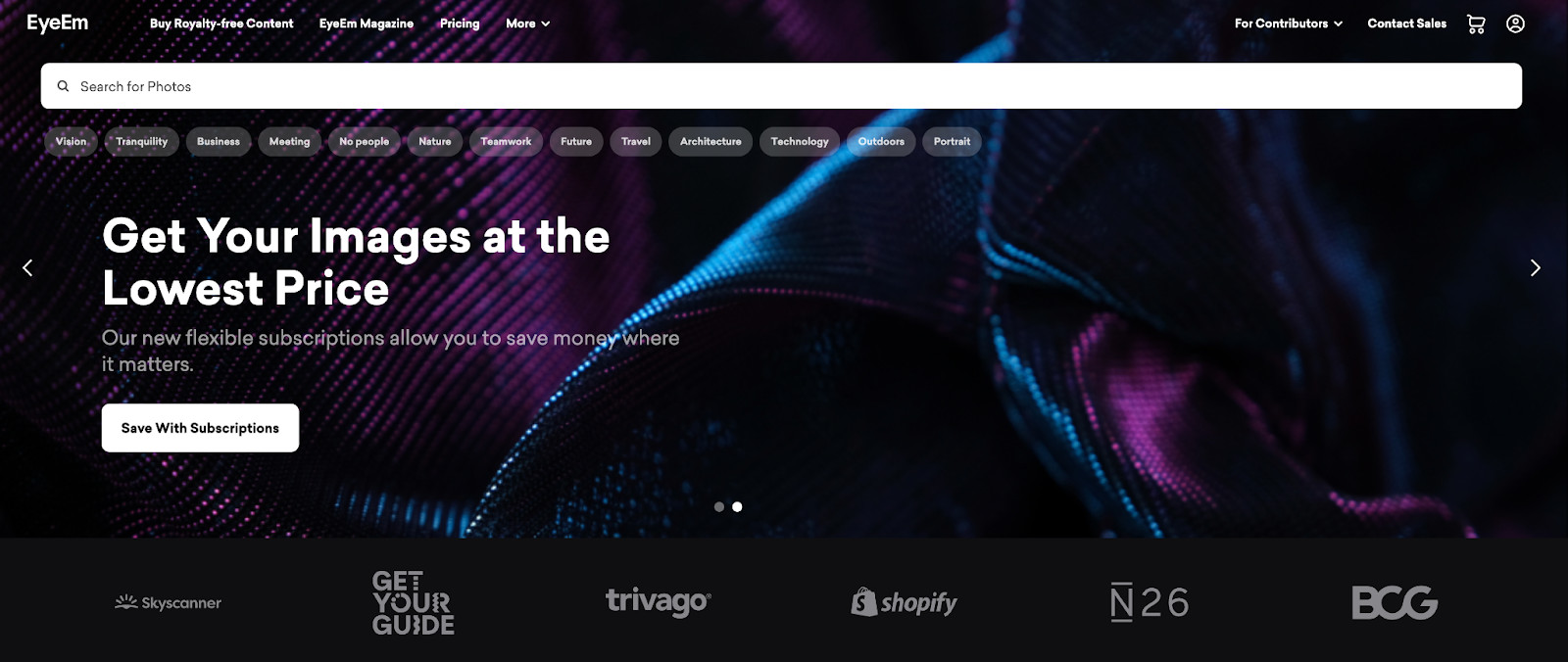 EyeEm's homepage showcases high-profile clients and a search bar, drawing photographers to a platform that combines community engagement with a marketplace for image licensing.
EyeEm's homepage showcases high-profile clients and a search bar, drawing photographers to a platform that combines community engagement with a marketplace for image licensing.
EyeEm combines a photo community with a marketplace. EyeEm invites photographers to contribute to missions that call for images on a theme.
How to Get Paid:
Contributors earn a 50% commission on each sale made through the EyeEm marketplace. Photographers are paid via PayPal.
1.15. Pond5 (for videos)
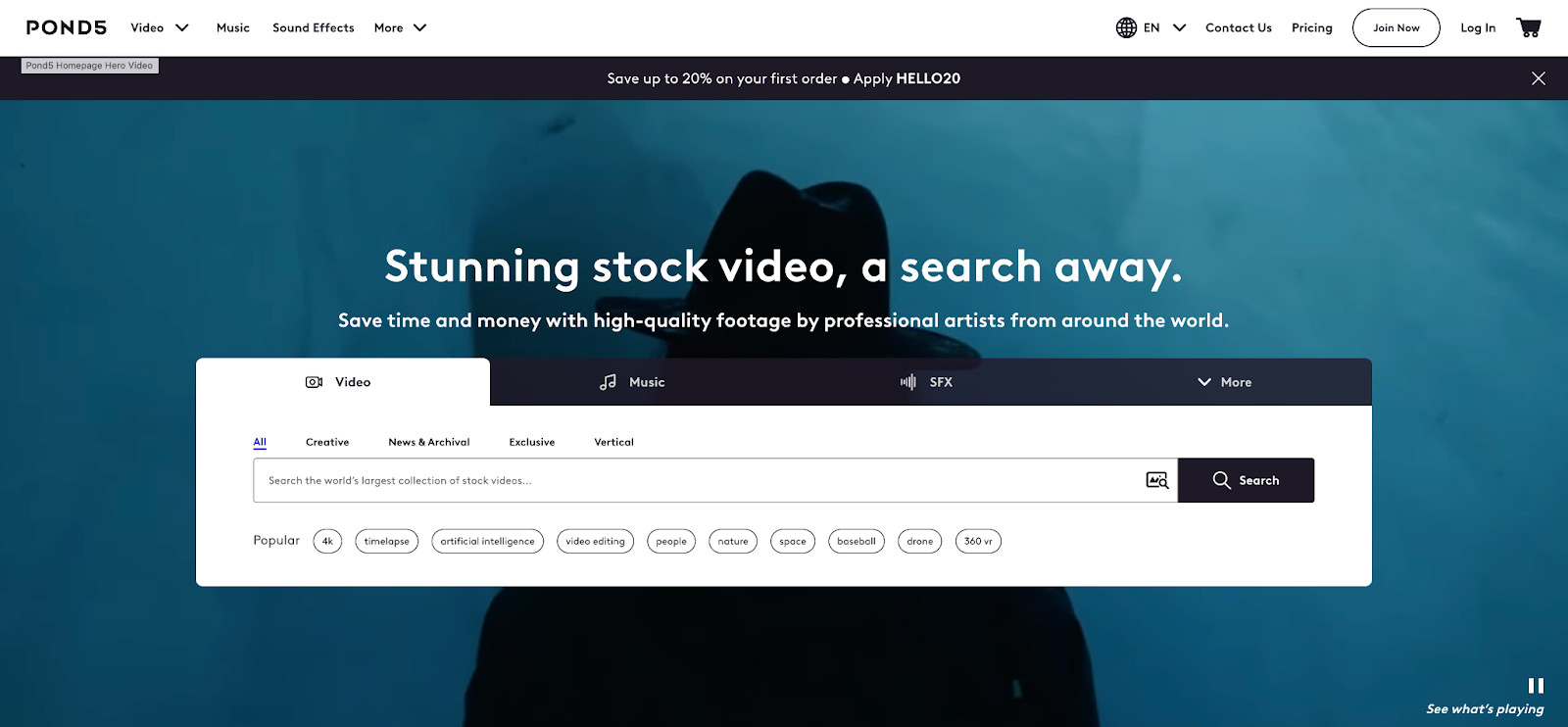 Pond5
Pond5
Pond5 is a marketplace for video content frequented by major brand clients. Pond5 is a marketplace for selling royalty-free videos, music, sound effects, and other assets.
How to Get Paid:
Video artists earn a 40% royalty share, with the option to make your content exclusive and earn up to 60%. Contributors can respond to client briefs via the Artist Portal. Pond5 also offers a referral program where artists can earn additional income.
2. Tips For Success In Stock Photography
How can you maximize your success in stock photography? Building a successful stock photography business requires more than just uploading photos. It involves defining your niche, engaging with your audience, and understanding your market. Here are some tips to help you stand out:
2.1. Define Your Stock Photography Niche
Having a consistent style or theme can help you stand out. Whether your focus is travel, fashion, nature, or food, consistency is key.
Photographers often find their niche by shooting styles and subjects they enjoy and that resonate with audiences. Keyword research can help you evaluate the demand for topics related to your photographs. Google Trends is a basic tool you can use to see which image topics are gaining popularity. For example, according to research from the Santa Fe University of Art and Design’s Photography Department, landscape photography is gaining popularity in the USA, as of July 2025.
2.2. Get On Instagram
Social media platforms like Instagram can help you reach a wide audience. Use Instagram tools to follow the right accounts, engage with popular hashtags, and grow a following of potential customers.
Linking your social media accounts makes it easier to manage your photo-sharing across platforms and boost visibility.
2.3. Integrate E-commerce Into Your Website
Adding a Shopify Buy Button to your site can make it easier for customers to purchase stock images from you. Photographer Dave Sandford, for example, has a store that showcases his wildlife photography and offers the opportunity to purchase prints and calendars.
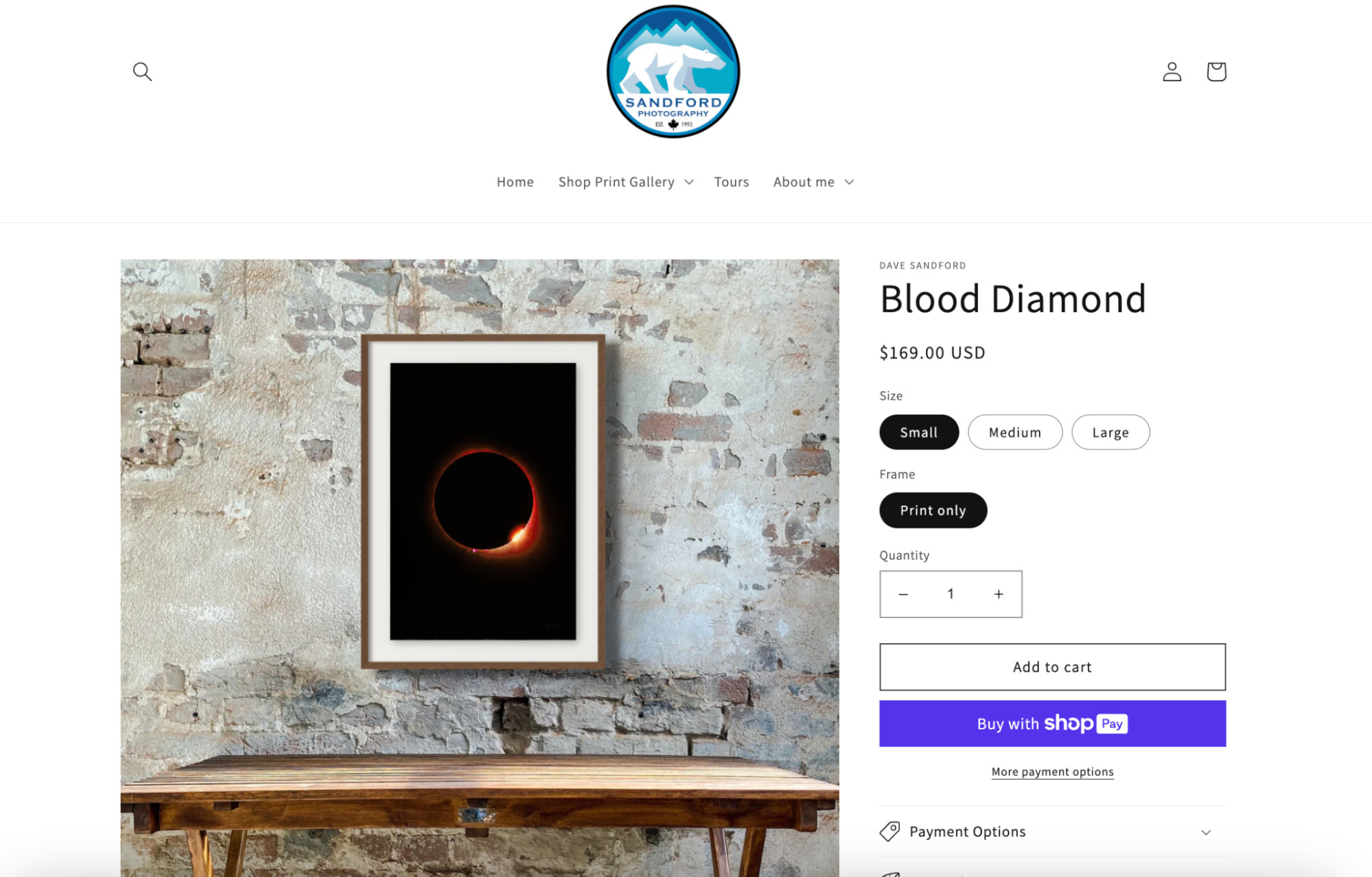 Product page for a print of a moon with a red border against a black background, illustrating a photographer's direct sales approach through an e-commerce platform.
Product page for a print of a moon with a red border against a black background, illustrating a photographer's direct sales approach through an e-commerce platform.
An example of an e-commerce photography product page. Dave Sandford Photos. The easiest way to sell photos online is to build a personalized portfolio page or store on Shopify.
Use a pre-designed art and photography theme to set up your digital showroom, or combine a free theme with a gallery app.
2.4. Understand Your Market
Your target market is the group of people most likely to buy your photos. Understanding who they are, what they’re interested in, and what they’ll buy is essential.
For example, if you specialize in wedding photography, the buyers of your stock images might be wedding stationery brands or suit wholesalers who want to show royalty-free images of wedding celebrations in their marketing collateral.
3. Building An Impressive Online Portfolio
How do you create an online portfolio that attracts clients? Your portfolio is a photographer’s résumé, showcasing your best work to potential clients. It should be well-structured, optimized for the web, and easy to navigate.
3.1. Choose The Right Platform
The best platform depends on the goals of your photography business and the amount of control you want over your imagery. If you want to upload photos as a hobby or earn small amounts of passive income, try stock photo submissions on sites like iStock or Alamy. To get assignments from brands without pitching them yourself, apply to be an Unsplash+ contributor. For complete control over your photography business, opt for an e-commerce platform like Shopify.
3.2. Plan Your Portfolio’s Structure
Pay attention to these elements of your portfolio:
- Layout: Photos should take center stage, with some context on what the image is about. Mini product descriptions can influence purchase decisions and improve your portfolio’s search engine ranking.
- Social Proof: Gather quotes from happy customers or showcase how your images have been used in successful campaigns.
- Categories and Organization: Help customers browse images by keeping everything tagged and organized. For example, a nature photographer might create image collections by location, environment, subject, and date.
- Gallery Size: Keep galleries limited to only high-quality images that showcase your best work.
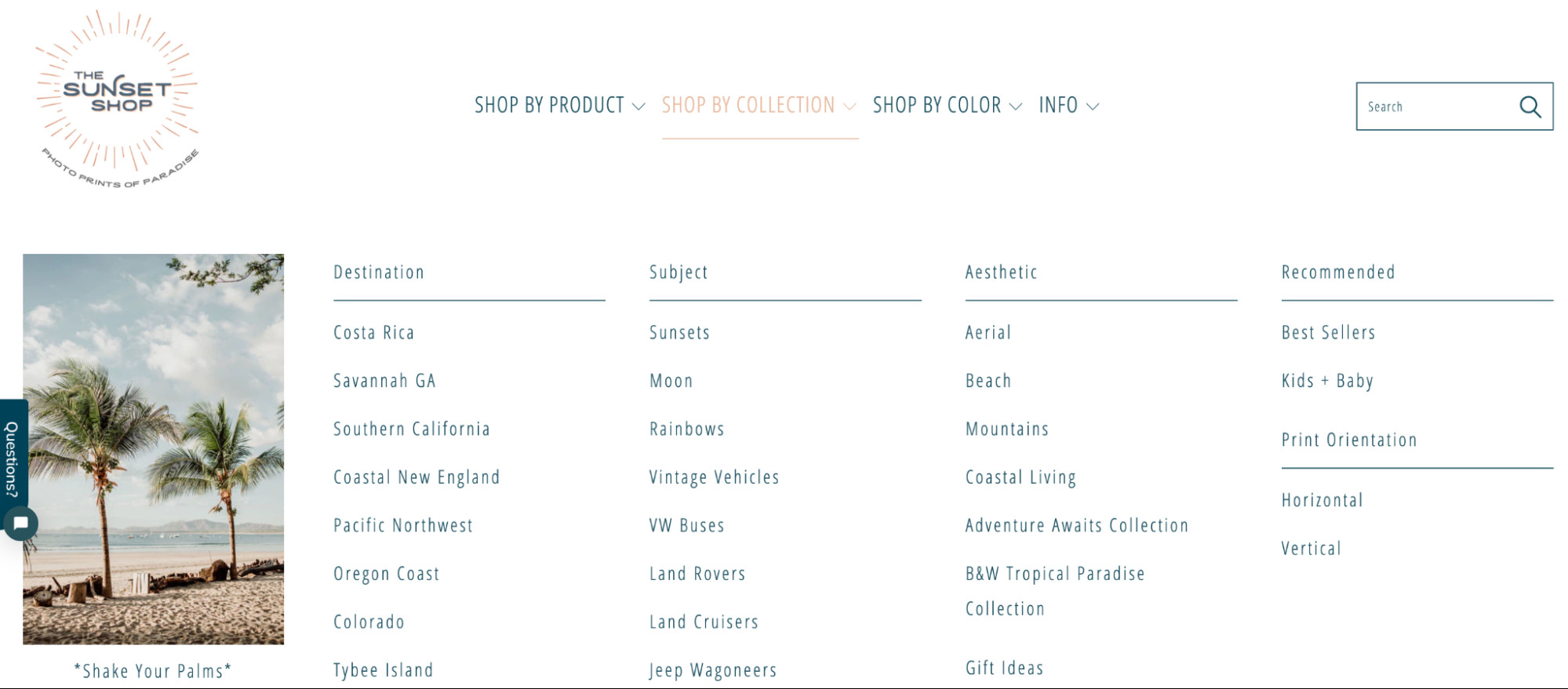 Example product categories on a photo print website including "Costa Rica," "Sunset," and "Mountains," demonstrating effective categorization for easy navigation.
Example product categories on a photo print website including "Costa Rica," "Sunset," and "Mountains," demonstrating effective categorization for easy navigation.
The Sunset Shop has categories for the photo type, aesthetic, and destination.
3.3. Optimize Images For The Web
Fast-loading images are essential for user experience. Large image files can slow down webpage loading times, which most people aren’t willing to wait for.
When uploading images:
- Compress Image Sizes: Keep images as small as possible without compromising quality. A general guideline is to compress images between 60% and 80%.
- Use Descriptive File Names: Name your file “summer-evening-nature” instead of “IMG_3542.jpg.”
- Write Alt Text: This tells search engines and screen readers what your photo is about.
3.4. Create An About Page
People buy from people, so include an About page that tells prospective customers about yourself. Include a brief summary of who you are and your photography journey.
This is an opportunity to sell yourself with a unique and engaging personal brand. Share how you got into the industry, what you love to shoot, and where you get your inspiration.
3.5. Implement E-Commerce Functionality
An e-commerce platform handles the logistics of selling photos online. Creating your portfolio on Shopify, for example, makes it easy to:
- Build an online storefront for people to self-serve and buy your products.
- Set up shop on social media storefronts like Instagram Shop.
- Take payment from customers and handle taxes.
- Ship your products, either physically or digitally, to customers.
- Manage marketing campaigns.
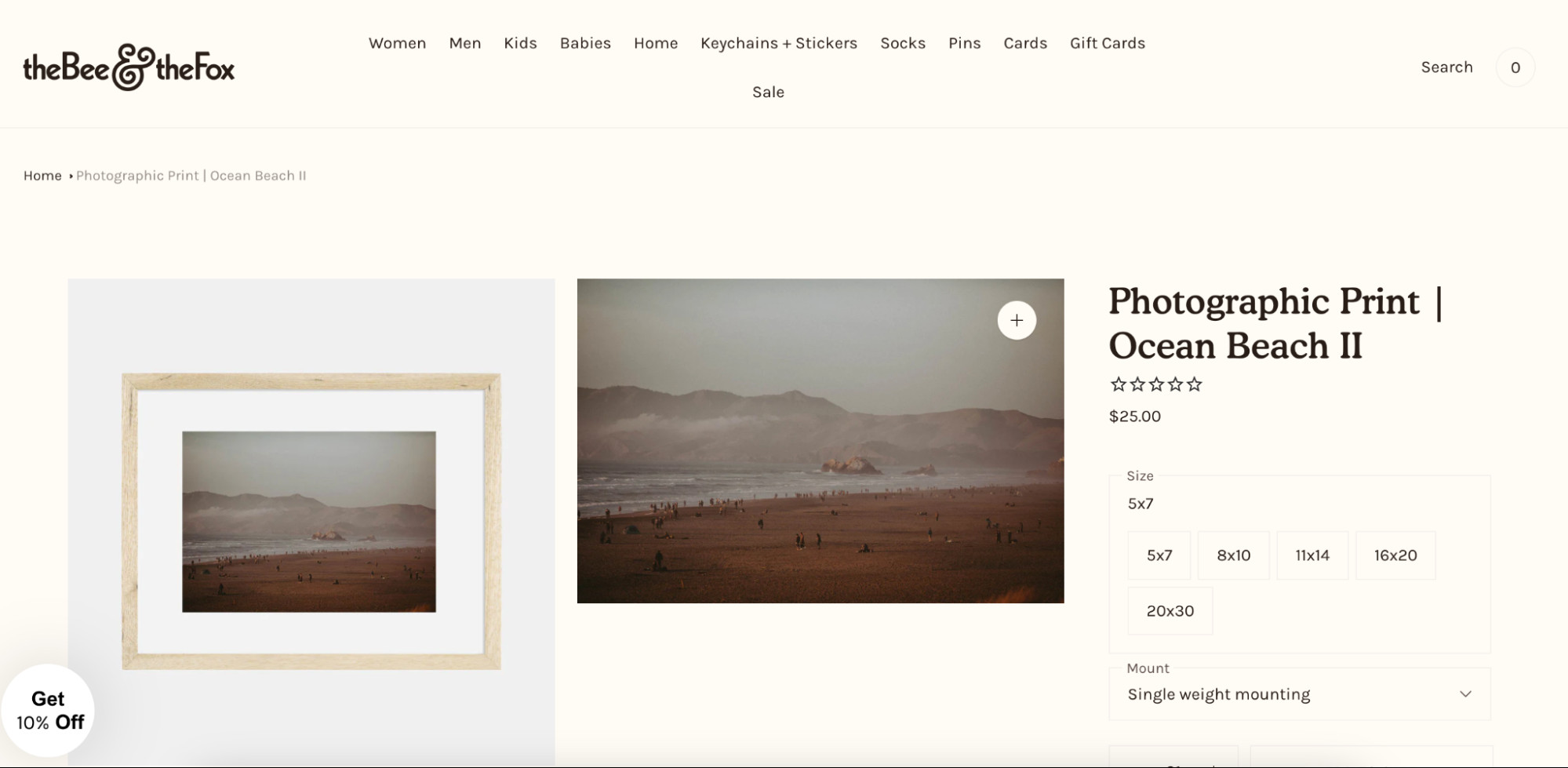 Product page for a 5×7 printed photo of a beach, showcasing a simple e-commerce setup for selling photography prints online.
Product page for a 5×7 printed photo of a beach, showcasing a simple e-commerce setup for selling photography prints online.
The Bee & The Fox uses Shopify to sell photography prints online.
3.6. Ensure Mobile Compatibility
With more than half of global website traffic happening through mobile devices, ensure your portfolio looks just as good on a smaller screen.
Use a responsive website design, display your photos vertically, and use large, finger-friendly buttons.
3.7. Launch And Promote Your Photos
Share your photos with the world using marketing tactics like:
- Reposting images on social media.
- Pinning photos on Pinterest and linking back to your portfolio site.
- Gifting free prints to influencers.
- Documenting the behind-the-scenes of a shoot on TikTok, YouTube, or Instagram Reels.
- Building an email list by offering website visitors a discount code on their first order.
4. Selling Photos As Prints And Photo Books
How can you sell your photos as physical products? Selling photos as prints and photo books allows you to offer tangible products that customers can own. You can sell photos as prints on paper or physical products such as mugs, T-shirts, and calendars.
The best way to sell photos online as physical prints or products is to work with a local photo lab that helps you ship and sell prints, or use a print-on-demand company to dropship a wide range of products (prints, phone cases, pillows, and more) featuring your photos.
4.1. Selling Photography Online As Photo Books
Photo books are another physical product that can feature your photography. The more niche and consistent your photography is, the more likely you’ll be able to put together a stellar photo book based around a compelling theme.
While you won’t get the best margins with print-on-demand services, it’s a risk-free way to test demand for your products before you decide to invest upfront.
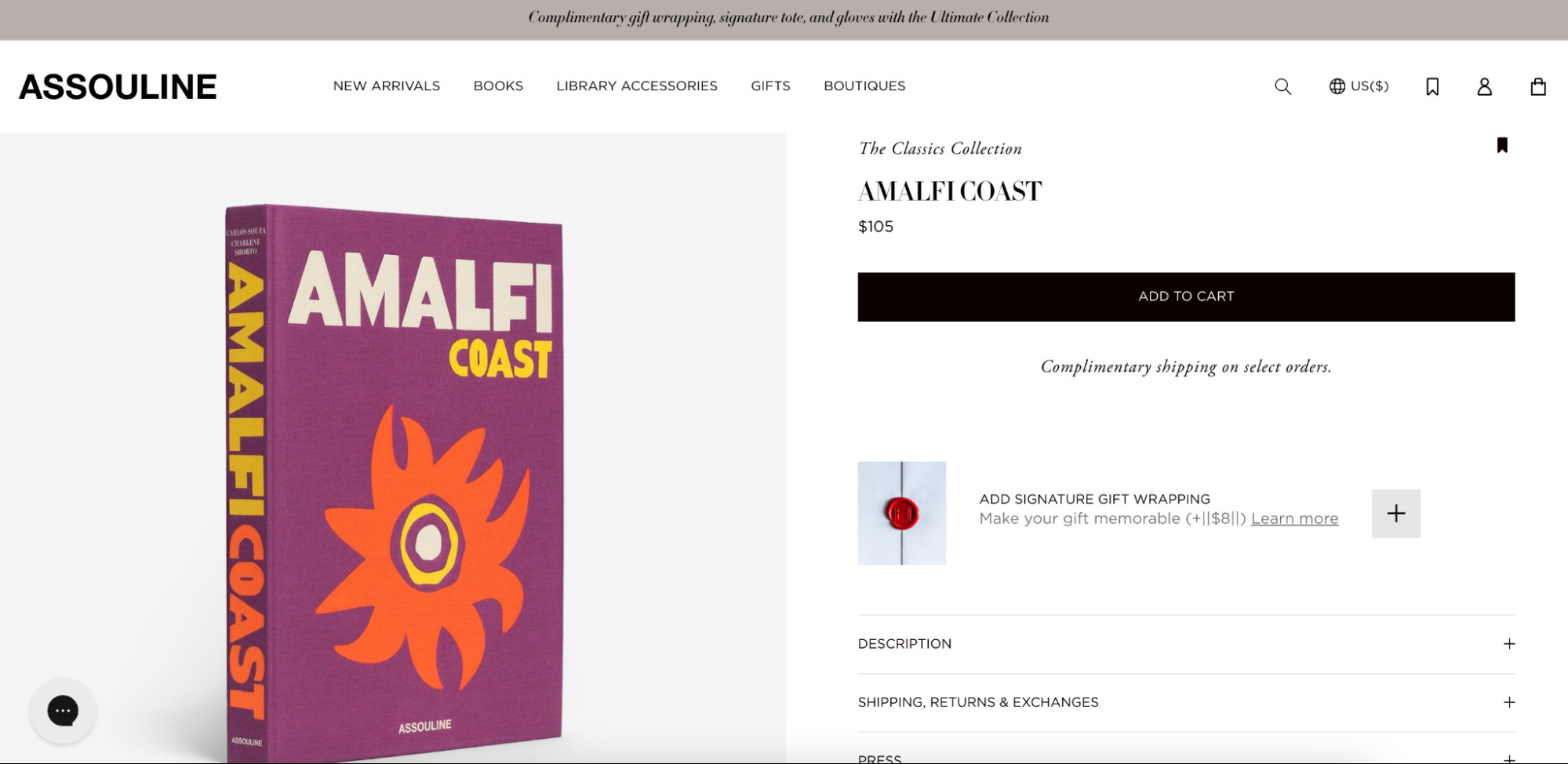 Photobook of images taken on the Amalfi Coast, demonstrating the appeal of premium photobooks featuring popular travel destinations.
Photobook of images taken on the Amalfi Coast, demonstrating the appeal of premium photobooks featuring popular travel destinations.
Assouline sells premium photo books of images shot in popular holiday destinations.
5. Offering Photography Services
How can you sell your photography services to clients? There are plenty of business opportunities available for professional photographers, including covering events, doing fashion shoots, and product photography.
You can list your services in freelance directories like Fiverr and Upwork. Also, consider networking locally or meeting with clients via video chat.
Here are some networking tips for selling your photography as a service:
- Always Have Business Cards Handy: Use Shopify’s free business card generator to create your own.
- Tidy Up Your LinkedIn Profile: Showcase your work and optimize it for the main photography service you provide, like event photography.
- Attend Networking Events: Target events where entrepreneurs and event organizers attend, as these folks often need professional photographers.
- Build A Personal Brand: Regularly share your work on social media platforms so you’re top of mind when anyone in your network needs your skills.
Since photographers must operate in strict time slots, having a booking platform helps prospective clients see your schedule and book you when you’re available. Setmore and SimplyBook.me have free plans and features that work well for photographers. If you’re using Shopify, add a scheduling app to book appointments directly from your site.
6. Pricing Strategies For Your Photos
How do you price your photos to maximize profit? Your talent and determination ultimately decide your earning potential when selling photos online.
Here’s how to decide on a pricing strategy for your photography business:
- Do Market Research: Ask your target market how much they’d pay for your photos and see how much comparable photos sell for on stock image sites.
- Determine Your Profit Margins: Consider the costs of photography, like equipment, website hosting fees, and marketing budgets. Ensure that any revenue you make from selling your photos contributes to these expenses.
- Set Different Prices For Usage: An exclusive photo can sell for more money than a non-exclusive one.
- Offer Discounts: Whether it’s a first-time customer or a loyal fan, experiment with discounts and promotions that incentivize people to buy your photos.
- Consider Product Bundles: Instead of selling one photo, sell a collection of related images at a discounted price. For example, one image of a beach might be $2.99, but a bundle of five beach-themed images could retail for $9.99.
7. Understanding The Legal Aspects
What legal aspects should you be aware of when selling photos? Rights and licenses related to selling photography can seem confusing, but knowing key terms and concepts can help protect you.
Here are some legal terms you should know:
7.1. Glossary Of Legal Terms For Selling Photos Online
- Editorial Use: Permission to use in blogs, newspapers, magazines, and other publications.
- Commercial Use: Permission to use in marketing and advertising to promote a product or service.
- Retail Use: Permission to use in the creation of a physical product to be sold, including prints, posters, and products that feature the photo (pillows, mugs, etc.).
- Exclusive Use: The one who purchases the license from you is the only one who can use the photo.
- Non-Exclusive Use: Photo licenses that can be purchased and used by anyone and usually cost less than exclusive ones.
- Public Domain: Photos have no restrictions or copyright claims and can be used for commercial, editorial, and personal purposes.
- Creative Commons: Conditional usage of your work is allowed, as long as it’s in compliance with the stated restrictions. Attribution to credit the creator is sometimes required.
- Royalty-Free: Others can buy a license and use the photo for an unlimited duration and unlimited number of times. This is the most common type of license purchased because these photos are usually non-exclusive.
- Rights Managed: A one-time license can be purchased to use the photo with restrictions regarding distribution. Additional licenses must be purchased for additional use.
- Right of Publicity: The subjects in your photos are entitled to certain rights when it comes to their inclusion in your photography, especially when it comes to commercial use. You should seek a subject’s explicit permission first.
7.2. What To Do If Someone Steals Your Photos
Theft is common concerning content, and many people do it unknowingly. Photographers can watermark their digital images before selling them online to protect against theft. You can apply identifying marks in Photoshop or use a watermark generator.
A smaller watermark, often in the corner, will less impact your photo, while a larger watermark with reduced opacity offers the most protection against theft.
If someone steals and uses your photos, a cease and desist request usually works. Alternatively, you can send the culprit an invoice for using your photo. Combining the two will likely persuade the perpetrator by offering them the choice to either pay you or take the photo down.
You should always try to get others to credit you whenever they use your work, even for editorial purposes. Backlinks to your portfolio site are useful for driving traffic to your other work and for search engine optimization.
8. How To Sell Photos Online FAQ
8.1. What Is The Best Way To Sell Photographs?
The best way to sell photographs online is by selling them as stock images on third-party websites like iStock, Shutterstock, or Alamy. Selling your photos through stock sites is quick, easy, and affordable.
8.2. Where Can I Sell My Photos Online For Money?
You can sell your photos on various platforms, including:
- Alamy
- 500px
- Shutterstock
- Getty Images
- iStock
- Stocksy
- Picfair
- Adobe Stock
- Envato Elements
- Unsplash
8.3. How Do You Make Money From Stock Photography?
A stock photography website sells high-priced and exclusive images that you upload. The agency licenses individual images to the client and sells them for a set price. Then you, the photographer, get a royalty payment.
Ready to elevate your photography skills and start earning from your passion? Visit dfphoto.net today for detailed tutorials, inspiring galleries, and a supportive community of photographers. Whether you’re looking to master new techniques or showcase your best work, dfphoto.net is your ultimate resource. Join us and discover the endless possibilities in the world of photography. Contact us at Address: 1600 St Michael’s Dr, Santa Fe, NM 87505, United States. Phone: +1 (505) 471-6001.